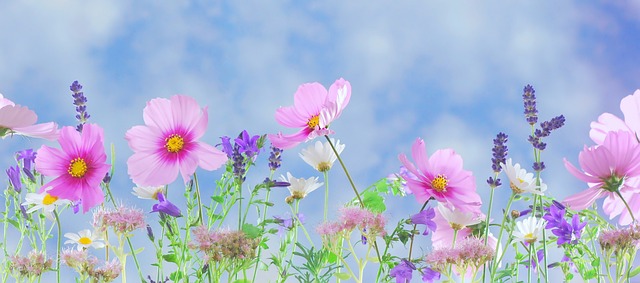When a photographer steps behind a lens, the first instinct is to capture what the eye sees. Yet, seasoned image‑makers often reveal that the true power lies in creating an illusion—a deliberate manipulation of perspective, lighting, and framing that guides the viewer’s gaze and invites deeper interpretation. This article explores a collection of composition tricks that exploit the interplay between optics and visual perception, turning ordinary scenes into compelling, illusionary works of art.
The Foundations of Visual Illusion
At its core, an illusion is a perceptual trick that causes the brain to interpret visual data differently from reality. In photography, this is achieved by controlling variables that the eye and brain rely on for depth, scale, and motion. By understanding how the visual system processes lines, contrast, and motion, a photographer can engineer scenes that bend perception. Key concepts include:
- Perspective distortion—using wide‑angle lenses to exaggerate depth.
- Light manipulation—contrasting shadows and highlights to create three‑dimensionality.
- Color contrast—employing complementary hues to make objects pop.
- Motion blur—suggesting movement that isn’t present.
Perspective Play: The Lensing Illusion
Perspective is perhaps the most accessible tool for generating illusion in photography. Wide‑angle lenses stretch the field of view, making foreground elements appear disproportionately large while pushing background objects smaller. When a photographer frames a tall building or a long hallway, the vanishing points create a sense of depth that may not truly exist. By carefully choosing the focal length and camera height, one can create a visual exaggeration that feels natural yet subtly deceptive.
“Perspective is the language of space. By altering its grammar, you can write stories that the eye reads as reality, even when it’s a crafted narrative.” – Anonymous photographer
Light as a Sculptor of Illusion
Light is the most powerful tool for shaping perception. The way light interacts with surfaces, textures, and colors can either reinforce reality or create an optical trick. Two primary techniques are:
- High‑contrast lighting—dramatic shadows paired with bright highlights can make flat surfaces appear sculpted.
- Backlighting and rim light—illuminating the edges of subjects can separate them from the background, creating a halo effect that often feels unreal.
When the lighting is carefully controlled, the brain interprets cues that are not present in the scene itself, enhancing the illusionary quality of the image.
Color Manipulation: A Palette of Perception
Color isn’t merely decorative; it can dramatically alter the way an image is perceived. By employing complementary colors or analogous schemes, a photographer can manipulate the viewer’s focus. For instance, placing a warm-colored subject against a cool background can create a pop that feels almost physical, while using muted tones can lead the eye to linger longer, creating a subtle illusion of depth.
Color grading in post‑processing further refines this illusion. Adjusting hue, saturation, and luminance can reinforce or subvert the intended effect, making the scene appear more vibrant or dreamlike.
Motion Blur: The Mirage of Movement
Motion blur is a classic trick that introduces the illusion of movement into static scenes. By selecting a longer shutter speed while the camera remains stationary, a photographer can create a sense of flow—whether it’s the gentle sweep of a waterfall or the swirling motion of a dancer’s scarf. Even when the subject is still, the surrounding environment can be captured in motion, giving the composition a dynamic energy that feels almost three‑dimensional.
- Fast shutter speed—captures crisp detail.
- Slow shutter speed—blurs motion, suggesting movement.
Rule of Thirds Reimagined
The Rule of Thirds is a staple in composition, but its application can be subverted to produce illusion. Instead of placing the main subject directly on a grid intersection, position it slightly off‑center or within a diagonal. This subtle shift can lead the viewer’s eye along an unexpected path, creating a visual tension that feels almost impossible. Combining this approach with other techniques—such as leading lines or contrasting colors—amplifies the illusionary effect.
Refraction and Lens Distortion: Optical Tricks in Real Time
Using reflective surfaces or lens distortion can produce surreal, illusionary results. A simple glass bottle or a pane of glass can bend light, creating miniature worlds within a frame. Photographers often employ these reflective surfaces deliberately, placing subjects behind or beside them to craft mirrored or split‑image effects that defy expectation.
“Every surface is a portal. The key is to choose the right portal and frame it correctly.” – Visual artist
Macro Illusions: Zooming into the Invisible
Macro photography magnifies details beyond the ordinary eye’s reach. By focusing on tiny textures—like the veins in a leaf or the grain in a stone—photographers can create images that feel abstract and otherworldly. The illusion emerges when the subject appears larger than life or when the background dissolves into a soft blur, leaving the foreground in sharp relief.
Using a small aperture (high f/number) ensures depth of field that isolates the subject, enhancing the illusion of scale and importance.
Depth of Field: The Blur that Tricks the Eye
Depth of field (DOF) is the range within a scene that appears acceptably sharp. By manipulating DOF, photographers can direct attention and create an illusion of space. A shallow DOF—achieved with a wide aperture—blurs the background, making the foreground subject pop. Conversely, a deep DOF keeps everything in focus, giving a sense of vastness. By choosing the appropriate DOF for a scene, a photographer can craft the illusion of either intimacy or grandeur.
Post‑Processing: Finalizing the Illusion
While many tricks are executed in-camera, post‑processing offers additional layers of illusion. Adjusting contrast, saturation, or adding selective color highlights can amplify existing cues. Techniques such as dodging and burning, selective sharpening, and vignetting can further guide the viewer’s eye, reinforcing the intended illusion. Importantly, these adjustments should enhance rather than distort the image, maintaining a truthful representation that still feels visually deceptive.



